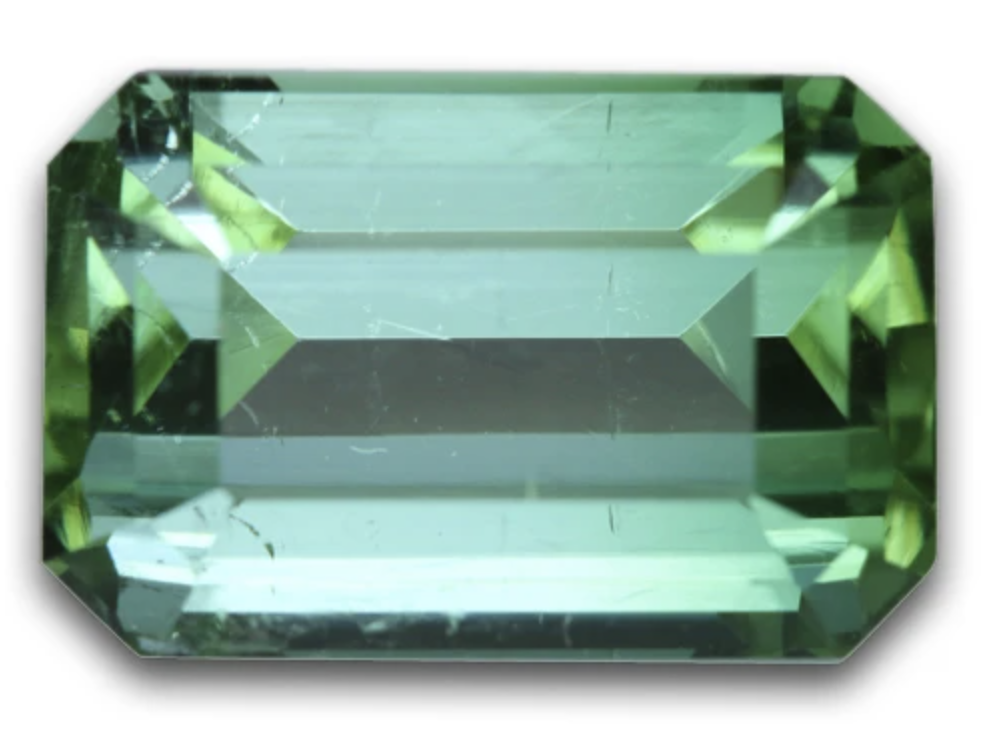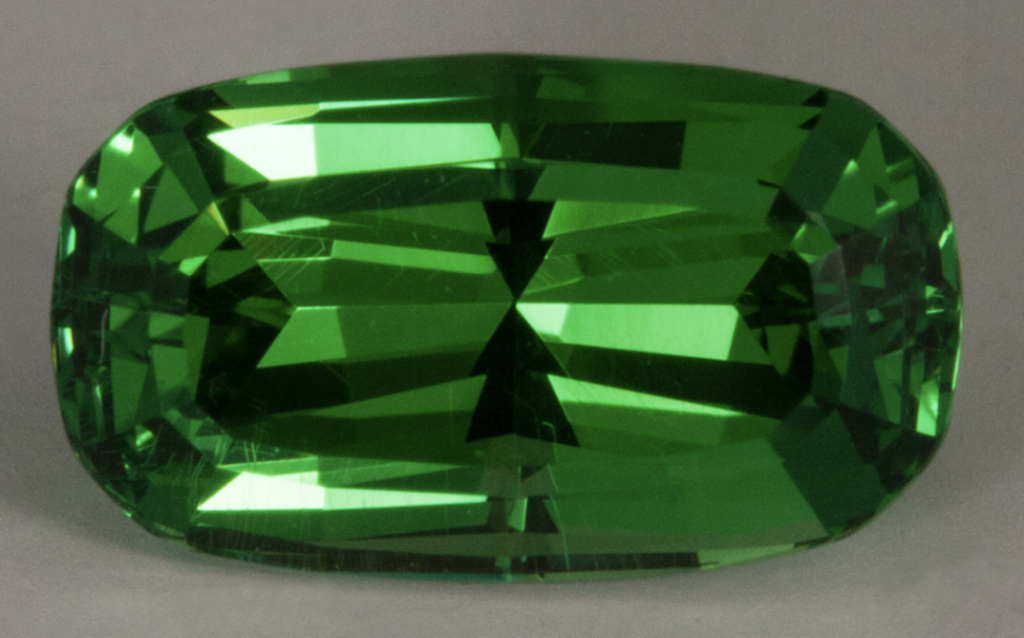Gem Commonly Confused with Emeralds


Despite having very similar colors, and hardness, these gems are not very likely to be sold as emeralds because of how rare and valuable Tsavorite garnets are (large pieces go straight to auction houses).
Peridot – While not the gemstone closest in appearance to emeralds, it is one of the best-known gems in the world (outside of emeralds, rubies, and sapphires). It is a softer gem than emeralds are, and will accumulate scratches. More importantly, they are a fundamentally different color from emeralds, with much more yellow in their green hue than any beryl reaching emerald color will have. Peridot is also colored by iron instead of chromium or vanadium, meaning it has a distinct spectrum that shows iron. This spectrum usually shows very clearly.

Tourmaline – Can be just about any imaginable color, including a very characteristic bluish green similar to emeralds. One main difference is that tourmalines very frequently have color-zoning, to the point that many of these gems are faceted with different colors (formally referred to as parti-colored tourmalines). In terms of color; they rarely reach as deep a green as emeralds do and lack the same shimmery effect emeralds show.
Because tourmalines are colored by many different elements, their spectrum may look slightly similar to an emerald’s if it is visible. The chemical spectrum is not always readable with hand-held equipment, often requiring expensive lab equipment to get any readings.
Tsavorite – A type of garnets with a very specific color of garnets, and can come very close to emeralds based on color alone. However, they are fundamentally different from garnets because they have a much simpler crystal structure. In other words; they do not split light that passes through them, formally referred to as being singly refractive. Emeralds do split light as it passes through the gem.

Potentially Similar Colors



Much like tourmalines, fluorite can be any color of the rainbow, and be vividly colored. However, it will never be confused with emeralds because it is extremely brittle and delicate. It can’t even be faceted through normal techniques. Outside of mineral specimens, fluorite is not popular. It cannot even be set into jewelry without the gem being damaged. The main type of fluorite jewelry available on the market is as beads.
Moldavite is a natural glass that formed from the melted remains of a meteor impacting the earth millions of years ago. It can show intense green color, but is very, very different from natural emeralds in durability and crystal structure. It is also typically a more yellowish color, like peridot.
Zircon is very likely to show emerald colors too, but is different from the previous examples as a durable gem. It even shows a better shine than emeralds, but more importantly green zircon is unstable. It is weakly radioactive, making the gemstone deteriorate due to itself over time.
